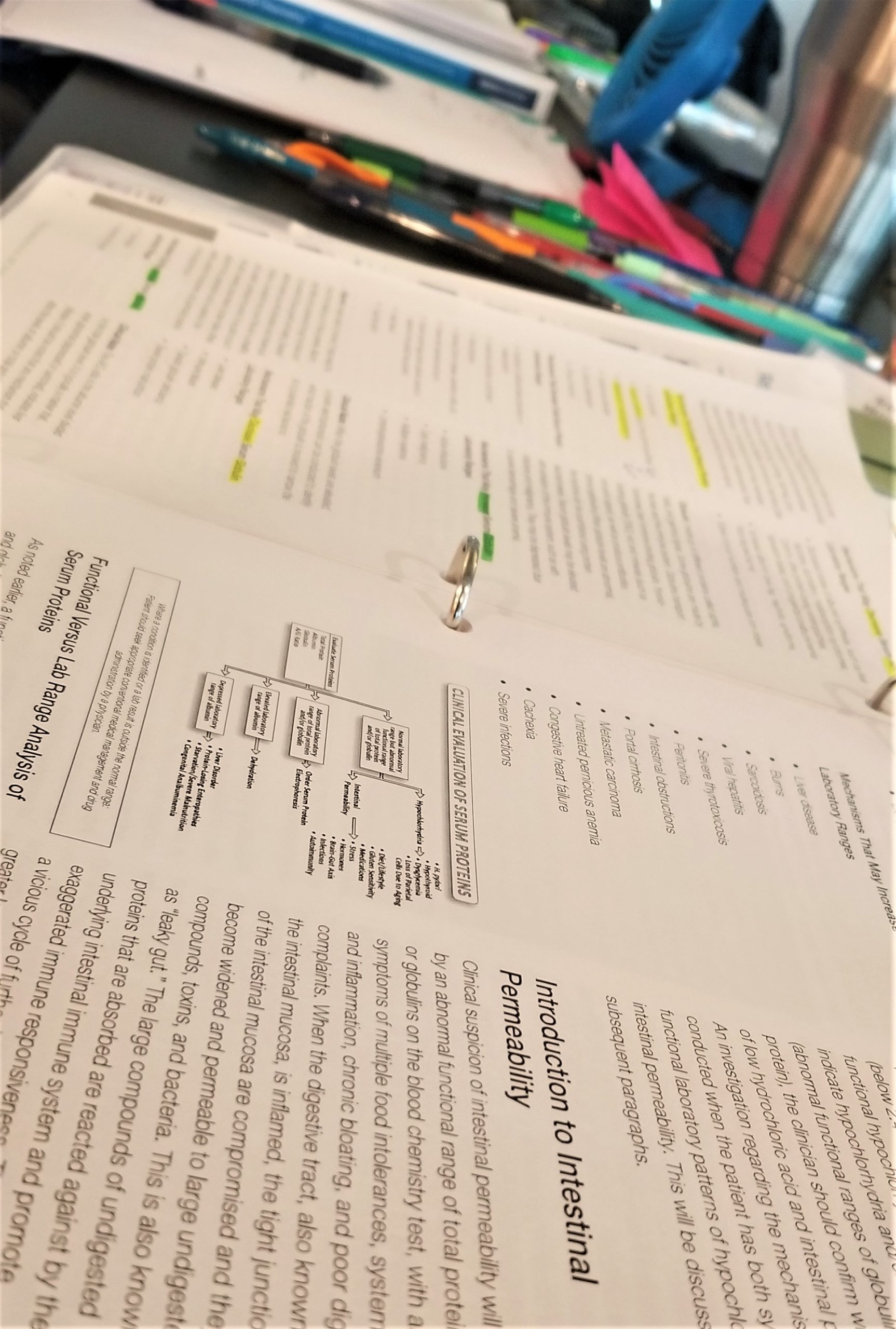One of the awesome things about being a student is that you get to pay the “student” rate for a whole bunch of post-graduate seminars! Our Post-grad Department sets up a wide variety of extra learning opportunities, because once you finish school you need to stay up-to-date with all of your continuing education units.

This past weekend, I attended a functional blood chemistry seminar offered by a supplement company that invests a great deal of time and money educating practitioners in a variety of internal medicine topics. There is, of course, a piece that shows how their products can be used to support treatment, but it doesn’t overshadow the other information. I have been looking into attending one of their seminars for some time, and now after finishing my first one, I have already signed up for my next one which will be on endocrinology. While I learned a ton of very seminar-specific things, some of the points in the intro of this speaker’s presentation stuck with me. In his introduction, speaker Dr. Thomas Culleton gave us a set of “rules” to live by, as far as the acquisition and utilization of knowledge goes.
Here are some I wanted to share, because I think should just apply to life in general:
4.) Read 10 pages per day. In the context of the seminar, this meant read 10 pages of the notes which were provided to us, per day, with the expectation that we will slowly but surely make it through all of the content. Ten pages might not seem like much in the grand scheme of things, but if you were looking at nothing before, then you are now 10 pages ahead of where you were at before! We are going to be doctors, and in making this choice we have signed up for a lifetime of learning whether we like it or not, and if we don’t work to better our knowledge we will not only be hurting yourselves, but putting your patients at risk as well…so read stuff–10 pages is nothing!
: )
3.) Pick a routine order and stick with it. When reading labs, it is good to follow the same order of searching EVERY TIME. Even when there are some aspects of the results that are screaming for your attention, jumping around makes it more likely that something else will be missed. In classes, I have seen how having a pattern can make all of the difference, especially when looking at images for radiology (Hint: Remember this when you are studying for that practical imaging test you will have for Dr. Bogar or Dr. Korvatko’s classes!), and in the way that you examine each patient. The more second nature the routine is, the more easily anything not matching the pattern will stick out.
2.) Draw it until you know it. This goes along with its friend, “if you can’t draw it, you don’t know it.” Now I know I have written about this before in my tips for studying, but I missed how being able to draw something out could apply to patient care. If you can draw out the pathways of physiology in a simple manner, then you can present them to your patients as a means of helping them understand why they are feeling the way they are, and why you have chosen the treatment you did. I feel like having more understanding of one’s health helps improve the rate of compliance with lifestyle changes.
And…
1.) Don’t just paint the plant green. Ok, so that sounds a little strange without all the back story. The short version is this: if you only try to make the outside look good without addressing the “why,” or underlying cause of the problem, then it will never truly be gone. In our field, we could give patients the very best supplements and apply an assortment of other therapies, but if they are still eating a junky diet, not moving their bodies, smoking, drinking, or are exposed to other toxins, then it doesn’t really matter how awesome your treatment plan is, the issue will still be there.
I think that is why I enjoyed the seminar so much, most of our time was spent learning how to identify “why?” from looking at patient’s symptoms in conjunction with their labs. As alternative and complementary health care providers, this should be our bread and butter…let the other guys chase around symptoms.




0 Comments